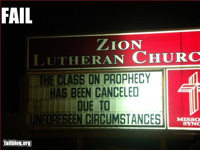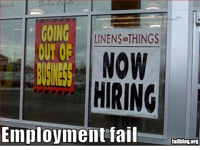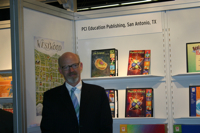 Seth Godin makes a critical point for instructional materials.
Seth Godin makes a critical point for instructional materials.
The platforms are changing all around us. Mobile phones, iPad, Kindle, Android, white boards, Moodle, etc.
Are you paying attention?
 Seth Godin makes a critical point for instructional materials.
Seth Godin makes a critical point for instructional materials.
The platforms are changing all around us. Mobile phones, iPad, Kindle, Android, white boards, Moodle, etc.
Are you paying attention?
Today’s hotlinks include Pearson’s take on publishing for the iPad, designing playful experiences, the coolest marketing program I’ve seen in a while, a new augmented reality game to promote social change in Africa, and Photoshop disasters.
John Makinson of Pearson Penguin gave an interesting talk on the future of publishing in an iPad world. Textbook publishers take note – he specifically cites one as part of his examples. This isn’t just for Penguin.
Pearson gets it – mostly. But they can’t escape the book metaphor. Essentially this is the sidescroller stage of evolution. Beyond Pong, but no further than Mario Brothers. Do something interactive, flip a “page.” 3D, embedded social connections (“who else in the world is looking at this page that i could talk too…”) etc. is still in the future and will require some radically different ways of constructing and navigating content. Hopefully they are working on that in the back of the back room. Hat tip to personanondata.
 OK – admit it, trade shows are fun. Sometimes traveling to a distant city, circulating with your peers, and dining out on the company can be a kick. You are learning too – about competitors and about your customers. The deadlines around a trade show can produce drama and tension, and some people thrive on that.
OK – admit it, trade shows are fun. Sometimes traveling to a distant city, circulating with your peers, and dining out on the company can be a kick. You are learning too – about competitors and about your customers. The deadlines around a trade show can produce drama and tension, and some people thrive on that.
By comparison web marketing can be a daily slog and there isn’t much direct contact with the customer. Web marketing requires persistence and patience. Success is metered in small steps and delivered incremental improvements over time.
In this article I explore who should prioritize shows and who should focus on web marketing and I share some ideas about how to compare the two.
FETC 2010 provided an opportunity to assess the health of the Education Technology market. In today’s guest blog my friend Mike Baum shares his take on the highlights and lowlights of this year’s trade show
By Mike Baum
 Coming to Orlando from Wisconsin in January, I expect warmer weather. I didn’t expect 50 degrees to be greeted as a warming trend. And when I saw the conference center adjacent to my hotel was hosting a national beekeeping convention with the alarming title “Keeping the Hive Alive,” I began to watch out for falling metaphors.
Coming to Orlando from Wisconsin in January, I expect warmer weather. I didn’t expect 50 degrees to be greeted as a warming trend. And when I saw the conference center adjacent to my hotel was hosting a national beekeeping convention with the alarming title “Keeping the Hive Alive,” I began to watch out for falling metaphors.
 At PCI we are putting the finishing touches on our 2010 budget. The Stimulus funds are creating a particular challenge as we look out over the next 12-24 months. On the one hand there should be plenty of new money in the market next year. On the other, despite ARRA an additional 9 states are sliding into California like crises as the housing slump begins to affect tax receipts.
At PCI we are putting the finishing touches on our 2010 budget. The Stimulus funds are creating a particular challenge as we look out over the next 12-24 months. On the one hand there should be plenty of new money in the market next year. On the other, despite ARRA an additional 9 states are sliding into California like crises as the housing slump begins to affect tax receipts.
There are two core questions companies need to answer as they think about priorities for the coming year.
1. When will stimulus dollars flow for instructional materials?
 The tribe gathered, bad coffee was drunk, stale muffins were eaten, and we shared insights and guesses about where education technology and publishing are headed in era of tight budgets and ARRA munificence. It was a typical first week of December in New York.
The tribe gathered, bad coffee was drunk, stale muffins were eaten, and we shared insights and guesses about where education technology and publishing are headed in era of tight budgets and ARRA munificence. It was a typical first week of December in New York.
Here is the first of my overviews of what happened during the week. Subsequently I’ll dig into the AEP CEO Roundtable, the MDR Christmas Party, and the AEP Hall of Fame Breakfast.
SIIA Education Technology Business Forum – Tuesday Dec. 1
 The education publishing tribe’s annual gathering is in New York this week. Today kicks off with the SIIA Ed Tech Business Forum (sold out) at the Princeton Club followed by the AEP CEO Roundtable (2 seats left) and the MDR/Peter Li Christmas Party tomorrow (by invitation), and the AEP Hall of Fame Breakfast on Thursday.
The education publishing tribe’s annual gathering is in New York this week. Today kicks off with the SIIA Ed Tech Business Forum (sold out) at the Princeton Club followed by the AEP CEO Roundtable (2 seats left) and the MDR/Peter Li Christmas Party tomorrow (by invitation), and the AEP Hall of Fame Breakfast on Thursday.
This annual trek is an important part of the culture of our industry and if you have not participated I encourage you to make time next year. I love me some social media – but there is no replacement for looking people in the eye, handshakes, and hugs for old friends. 95% of communication is non-verbal after all.
Over the next few days I’ll be putting up a few posts about the events this week. My intention is not to provide general reporting, but to drill in on a few things I find interesting. We’ll see how that goes.
 literacy n. The condition or quality of being literate, especially the ability to read and write.
literacy n. The condition or quality of being literate, especially the ability to read and write.
Surpise! It turns out that the generation in school today is writing more and reading more. Several recent reports provide evidence to support this startling claim. The internet – a time pig that has consumed us with new ways of doing things – has wings.
This trend is global – according to the CIA literacy rates went from 50-60% in the 1970’s to over 80% by 2005. Teens are leading the way. TV is for geezers.
By Guest Blogger Randy Wilhelm – CEO of netTrekker
 One of the most obvious ways to engage students is to give them access INSIDE of school to all of the amazing Web 2.0 tools that engage them OUTSIDE of school. Who hasn’t tried to get through to his 15 year old with an iPod cranked in his ears and a cell phone glued to his hands?
One of the most obvious ways to engage students is to give them access INSIDE of school to all of the amazing Web 2.0 tools that engage them OUTSIDE of school. Who hasn’t tried to get through to his 15 year old with an iPod cranked in his ears and a cell phone glued to his hands?
But as students’ familiarity with and reliance on the Web 2.0 technologies grows, schools are still fighting the battle of how to incorporate these engaging tools while keeping kids safe and protecting them from inappropriate content and online activities.
 Vast is too small a word to describe the Frankfurt Book Fair. Spread over several buildings – each the size of a normal convention center – one can find everything related to publishing in the world. It’s literally literature.
Vast is too small a word to describe the Frankfurt Book Fair. Spread over several buildings – each the size of a normal convention center – one can find everything related to publishing in the world. It’s literally literature.
We attended this year because education publishing, a business with deep local ties based on culture and economics, is globalizing along with everything else.
In my consulting practice prior to PCI half my clients were international companies, not traditional US based publishers. This was my first clue.